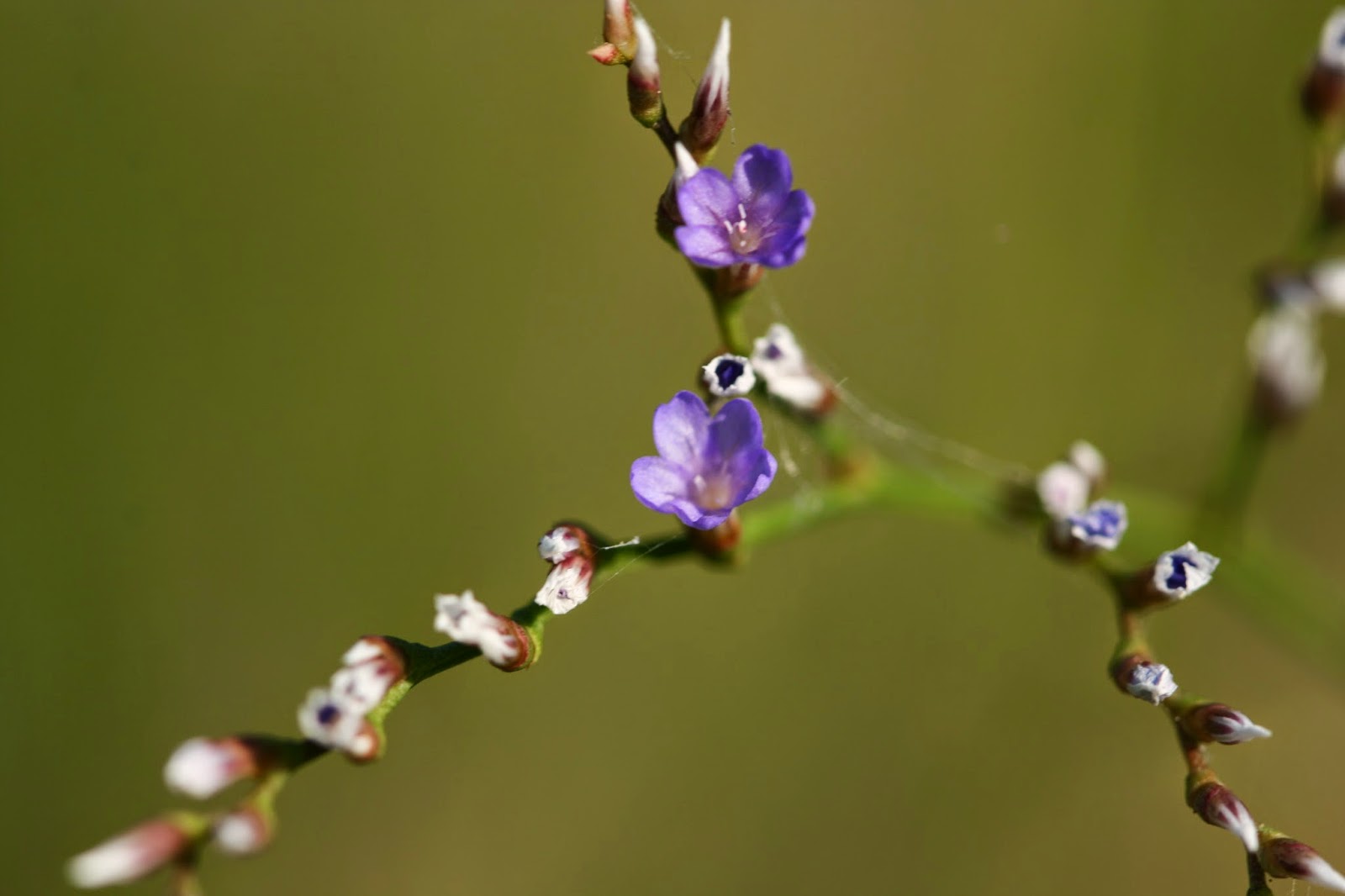Sunday, July 20, 2014
Lindenleaf Rosemallow/Sleepy Hibiscus - Hibiscus furcellatus
Sleepy hibiscus (Hibiscus furcellatus) is a tropical species that occurs naturally in Florida only along the eastern coastal counties, from Brevard to Broward County - with an inland population in Highlands County. It occurs widely in more tropical locations, however, throughout much of the West Indies and parts of South America and is considered native in Hawaii. It's range seems to be largely restricted by winter freezes.
Sleepy hibiscus is a lanky perennial that can reach 6 feet at maturity. As a tropical species, it is evergreen and can bloom much of the year. The photos above were taken in mid-July at my Pinellas County residence. Other writers report that it becomes shrubby, as wide as it can be tall, but the plants I've observed have been rather thin with multiple side branches. The leaves are shallowly lobed, more like a maple than a linden (basswood - Tilia spp.), and somewhat rough to the touch. The stems also have stiff hairs.
Sleepy hibiscus is so named because of its nodding, half-open blooms. They are bright pink in color with a deeper rose-colored throat. Each is 6-8 inches long and quite showy. Their "sleepy" aspect makes it somewhat difficult for butterflies to pollinate them, but they are visited by bees - and hummingbirds in parts of their range.
Sleepy hibiscus is most common to the upper edges of south Florida pinelands and wetlands where they are shallowly inundated during the wetter months. Though not as needy of standing water as many of our native hibiscus, it prefers moisture - especially during the hotter months. It is reported to fare reasonably well in typical upland landscape conditions, but I have found it to need supplemental water if the soils become dry.
Regrettably, this species is only rarely offered for sale in Florida. Currently, no nursery affiliated with FANN- the Florida Association of Native Nurseries, is propagating it and I have not seen it offered for at least a decade. The plants above, were grown from seed collected several years ago in a wet flatwoods in St Lucie County. We hope to be able to propagate it from the seed of our plants this fall to make it available in Spring 2015. Inquire if interested.
Wednesday, July 2, 2014
Sea Lavender - Limonium carolinianum
Sea lavender (Limonium carolinianum) is native to the coastal marshes of every coastal county in Florida and those of the Gulf Coast and Eastern Seaboard, from Texax to Quebec and Labrador/Newfoundland. It is highly salt tolerant and tolerates daily inundation during high tides.
Sea lavender is a perennial forb. In Florida, it tends to keep its basal leaves through winter. These are variable in shape, but most frequently are lanceolate and rather succulent in appearance. The multi-branched, nearly leafless flower stalks arise from these leaves and stand about 2 feet tall. Flowering is most common in spring and in fall, but can occur in most months in central and southern Florida. Numerous 5-petal blooms are produced for many weeks, a few at a time. As the common name implies, they are a rich lavender in color. Though each bloom is small (about 1/8 inch across) and opens for only part of the day, plants during the peak blooming season are quite attractive.
Because of its habitat preferences, sea lavender is only sporadically grown by commercial sources and it does not lend itself to the typical landscape setting. It would make an interesting and attractive addition to a salt marsh restoration or for landscapes on the beach that receive direct saltwater inundation.
Subscribe to:
Comments (Atom)





